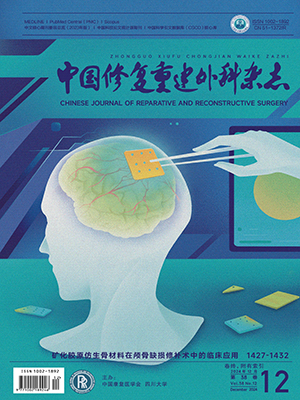Objective To determine whether the different durations and times of the ischemic preconditioning affect the effectiveness of the ischemic preconditioning. Methods Ninety male Wistar rats were randomly divided into the control group and the eight preconditioned groups of 10 rats each. A transverse rectus abdominis musculocutaneous flap (TRAM) was elevated in each rat. The flaps were preconditioned by clamping the pedicle and reperfusing for 5 or 10 minutes per cycle. This was repeated for one or two cycles. The controls were simply perfused for 30 minutes. Each flap was then subjected to 4 hours of the global ischemia. Three rats in each group were killed for anestimate of the water content in the muscle and for observation on the muscularstructure under microscope. The flap surface survival areas of the other rats were calculated on the 7th postoperative day by the computerized video planimetry. Results The water content in the muscle was evidently reduced. The mean survival area of the flap in every preconditioned group increased by2-3 times compared with that of the controls(P<0.001). The different proceduresof the ischemic preconditioning produced different protective effects. Conclusion The ischemic preconditioning is an available means to alleviate an ischemiareperfusion injury to the transverse rectus abdominis musculocutaneous flap in rats. The effect of the ischemic preconditioning is affected by the duration and time of the ischemic preconditioning.
Citation: WANG Honggang,LIZhiyong,LIU Xiaolin,et al.. EFFECTS OF DIFFERENT DURATIONS AND TIMES OF ISCHEMIC PRECONDITIONINGON ISCHEMIAREPERFUSION INJURY TO TRAM FLAPS IN RATS. Chinese Journal of Reparative and Reconstructive Surgery, 2006, 20(4): 431-433. doi: Copy
Copyright © the editorial department of Chinese Journal of Reparative and Reconstructive Surgery of West China Medical Publisher. All rights reserved




